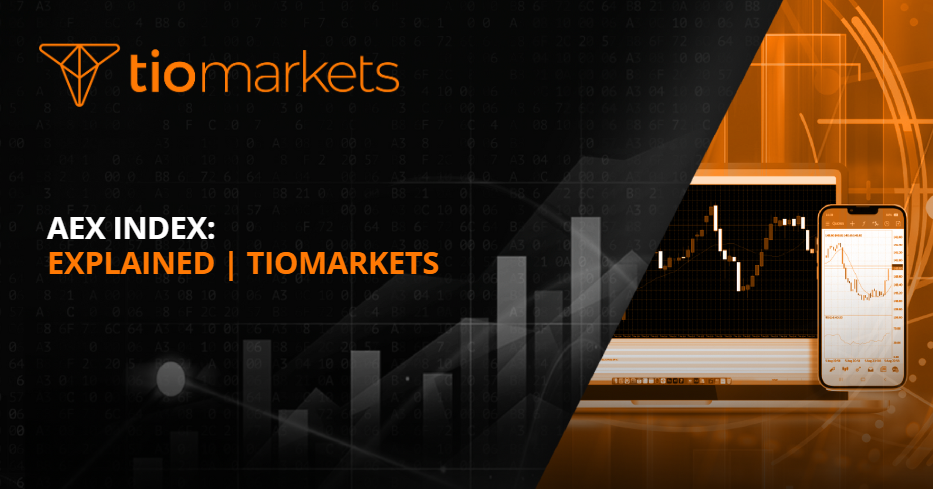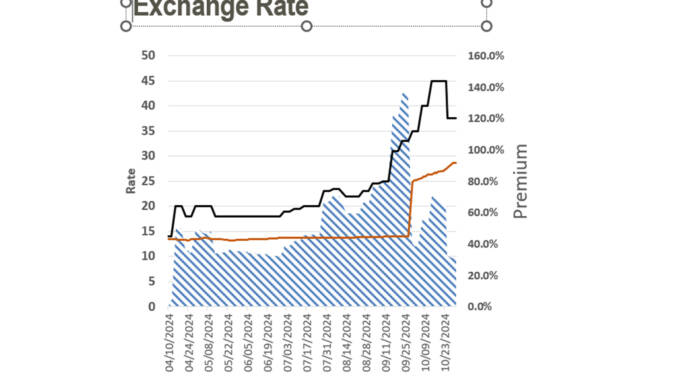Amsterdam AEX Index Suffers Sharpest Fall In Over A Year

Table of Contents
Causes of the Amsterdam AEX Index Fall
Several intertwined factors contributed to the sharp decline in the Amsterdam AEX Index. Understanding these causes is crucial for assessing the current market climate and predicting future trends in the Dutch stock market.
Impact of Global Economic Uncertainty
The current global economic landscape is characterized by significant uncertainty, directly impacting the AEX. Several key factors are at play:
- Weakening global growth forecasts: International organizations like the IMF are revising down their global growth projections, fueling concerns about a potential recession. This negatively impacts investor confidence, leading to a sell-off in riskier assets, including those listed on the AEX.
- The ongoing war in Ukraine: The conflict continues to disrupt global supply chains, drive up energy prices, and increase geopolitical instability. This uncertainty makes investors hesitant, triggering capital flight from riskier markets like the AEX.
- Energy price volatility: Fluctuating energy prices, particularly natural gas, significantly impact businesses across various sectors. This volatility creates uncertainty, influencing investor decisions and contributing to the AEX's decline.
- Supply chain disruptions: Persistent supply chain bottlenecks continue to hamper production and increase costs for businesses. This negatively impacts corporate profits, leading to downward pressure on stock prices within the AEX.
These global headwinds created a perfect storm, diminishing investor confidence and leading to increased selling pressure on AEX-listed companies.
Sector-Specific Performance
The AEX decline wasn't uniform across all sectors. Some sectors suffered more significant losses than others:
- Financials: Rising interest rates, designed to combat inflation, typically negatively impact the profitability of financial institutions. This resulted in significant losses for banks and insurance companies listed on the AEX.
- Energy: While energy companies might benefit from high prices in the short term, the long-term implications of the energy transition and regulatory changes create uncertainty, impacting their stock performance.
- Technology: The technology sector is particularly sensitive to shifts in investor sentiment. Concerns about slowing growth and rising interest rates contributed to a significant decline in tech stocks listed on the AEX.
- Consumer Staples: While generally considered defensive, even consumer staples were impacted by inflation and reduced consumer spending, resulting in some degree of downward pressure on their stock prices.
Analyzing the performance of individual companies within these sectors provides a clearer picture of the market's dynamics. Specific companies experienced dramatic stock price drops, reflecting the overall negative sentiment.
Investor Sentiment and Market Psychology
Fear and uncertainty played a significant role in driving the AEX's decline.
- Increased market volatility: The sharp drop itself amplified fear, leading to panic selling by some investors.
- Decreased investor confidence: Negative news headlines and gloomy economic forecasts further eroded investor confidence, pushing them towards safer assets.
- Panic selling: A self-fulfilling prophecy emerged as panic selling exacerbated the downward trend, creating a vicious cycle.
Market analysis and news coverage significantly impacted investor behavior. Negative narratives amplified the downturn, creating a climate of fear and uncertainty that contributed to the AEX's sharpest fall in over a year.
Consequences of the AEX's Sharpest Fall
The dramatic fall in the AEX has wide-ranging consequences for the Dutch economy and its citizens.
Impact on Dutch Businesses
The decline in the AEX has several potential negative impacts on Dutch businesses:
- Decreased business valuations: Lower stock prices directly translate to decreased business valuations, impacting companies' ability to raise capital.
- Potential for job losses: Companies facing reduced profits may be forced to cut costs, potentially leading to job losses across various sectors.
- Reduced investment opportunities: A weaker stock market can discourage both domestic and foreign investment, hindering economic growth.
The ripple effect of the market downturn can significantly impact employment and the overall health of the Dutch economy.
Implications for Pension Funds and Individual Investors
The AEX's fall has significant implications for both pension funds and individual investors:
- Losses in retirement savings: Pension funds holding AEX-listed stocks experienced significant losses, potentially impacting retirement income for millions of Dutch citizens.
- Impact on portfolio diversification strategies: The downturn highlights the importance of diversification in mitigating risk. Investors with heavily concentrated portfolios in the AEX suffered disproportionately.
Investors need to carefully review their portfolio diversification strategies and consider seeking professional financial advice to navigate the current volatile market conditions.
Government Response and Economic Policies
The Dutch government may need to consider several measures to mitigate the negative consequences of the AEX's fall:
- Potential for fiscal stimulus: Government spending on infrastructure projects or tax cuts could help stimulate economic activity.
- Monetary policy adjustments: The Dutch central bank may adjust interest rates to support economic growth while managing inflation.
The effectiveness of government responses will be crucial in determining the speed and strength of any economic recovery. Historical analysis of previous government responses to market downturns will inform their approach.
Outlook and Future Predictions for the Amsterdam AEX Index
Predicting the future performance of the AEX is challenging, given the current level of uncertainty.
Analyst Forecasts and Market Predictions
Market analysts offer a range of predictions regarding the AEX's future performance:
- Consensus forecasts for AEX growth: Some analysts predict a gradual recovery, while others anticipate further volatility.
- Potential recovery scenarios: Various factors, including global economic recovery and changes in investor sentiment, will influence the speed and extent of any recovery.
It's important to consider a range of opinions, acknowledging both optimistic and pessimistic predictions.
Factors that Could Influence Future Performance
Several factors could influence the future trajectory of the AEX:
- Global economic recovery: A robust global recovery would likely boost investor confidence and positively impact the AEX.
- Changes in interest rates: Future adjustments to interest rates will significantly affect various sectors and influence overall market sentiment.
- Geopolitical developments: The resolution of geopolitical conflicts and reduced global uncertainty would contribute to a more stable market environment.
These factors will likely interact in complex ways, making it difficult to accurately predict the AEX's future performance.
Conclusion
The sharpest fall in the Amsterdam AEX Index in over a year highlights the significant volatility affecting global and European markets. Understanding the contributing factors—global economic uncertainty, sector-specific weaknesses, and investor sentiment—is crucial for navigating this challenging period. While the outlook remains uncertain, staying informed about market trends and adjusting investment strategies based on professional advice is essential. Keep a close watch on the Amsterdam AEX Index for further updates and crucial developments that will shape the future trajectory of the Dutch economy. Regularly monitor the AEX and other key economic indicators to make informed decisions about your investments.

Featured Posts
-
 Paris Fashion Week Amira Al Zuhairs Zimmermann Debut
May 24, 2025
Paris Fashion Week Amira Al Zuhairs Zimmermann Debut
May 24, 2025 -
 Your Escape To The Country A Step By Step Relocation Plan
May 24, 2025
Your Escape To The Country A Step By Step Relocation Plan
May 24, 2025 -
 Ai Stuwt Relx Door Economische Recessie Sterke Resultaten En Toekomstperspectief
May 24, 2025
Ai Stuwt Relx Door Economische Recessie Sterke Resultaten En Toekomstperspectief
May 24, 2025 -
 Cac 40 Weekly Close Down Despite Stability March 7 2025
May 24, 2025
Cac 40 Weekly Close Down Despite Stability March 7 2025
May 24, 2025 -
 Escape To The Country Redefining Rural Life
May 24, 2025
Escape To The Country Redefining Rural Life
May 24, 2025
Latest Posts
-
 Public Figure Questions The Accusations Sean Penn And The Dylan Farrow Case
May 24, 2025
Public Figure Questions The Accusations Sean Penn And The Dylan Farrow Case
May 24, 2025 -
 Mia Farrow On Trumps Venezuelan Deportation Lock Him Up
May 24, 2025
Mia Farrow On Trumps Venezuelan Deportation Lock Him Up
May 24, 2025 -
 Woody Allen And Dylan Farrow Sean Penns Perspective On The Allegations
May 24, 2025
Woody Allen And Dylan Farrow Sean Penns Perspective On The Allegations
May 24, 2025 -
 Actress Mia Farrows Plea Jail Trump For Deporting Venezuelan Gang Members
May 24, 2025
Actress Mia Farrows Plea Jail Trump For Deporting Venezuelan Gang Members
May 24, 2025 -
 Sean Penns View On The Dylan Farrow Woody Allen Sexual Assault Case
May 24, 2025
Sean Penns View On The Dylan Farrow Woody Allen Sexual Assault Case
May 24, 2025
